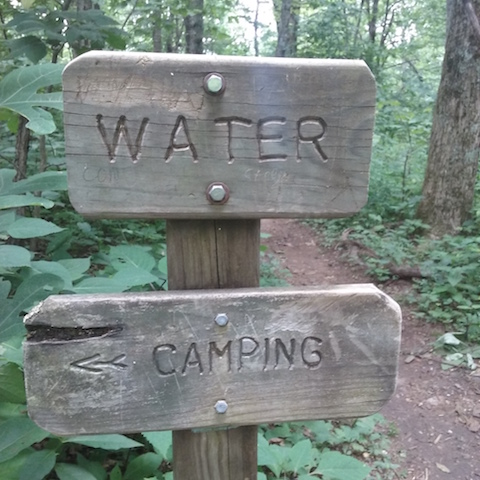AT Lesson #4: Know Your Metrics for Success

I stood motionless, training all of my senses toward the faint whisper of sound that had caught my attention. Frozen in the middle to the trail, I strained to hear the sound again. Moving my head slightly to the left, I listened intently. My eyes darting back and forth, scanning the underbrush for a sign.
Did I hear the faint gurgling of a small creek? Was it the sound of a narrow stream of water as it washed over small rocks and dampened leaves? Or was it just a slight breeze tickling the canopy above me, teasing me with the hope of water?
Before leaving camp this morning I had consulted my guidebook, a morning ritual that I had adopted early in my trek. I reviewed my plans for the day. How far would I hike? How many mountains would I climb? Would I cross any roads or other recognizable waypoints? How far to the known water sources?
Calculating the amount of water to carry requires that you balance two competing goals. Carry too much and you’ve needlessly added additional weight to your pack. This is especially important at the foot of a long and steep climb, of which there are many. Carry too little and you risk running out before finding replenishment. The effects of dehydration while walking along a steep trail in Georgia in the middle of summer can be dangerous.
I had considered the sketchy reports from the few southbound hikers that I had met and decided to purify 3 liters of water before leaving camp. It’d been an unusually dry spring in northern Georgia and many of the water sources listed in my guidebook were dry. Few things are as disheartening on the trail as the sight of a dry water source.
Now, I was down to just half a liter. I decided to walk a little further along the trail, hoping that the sound was indeed liquid in origin. If I didn’t find water within the next ten minutes, I would drop my pack and check my guidebook.
As a rounded a slight bend in the trail, there it was! A small rivulet of water trickling from a magnolia leaf that someone had wedged into the stream to create a spout. Water! That clear, odorless, tasteless, liquid that is so very rejuvenating on a hot summer’s day.
AT Lesson #4
Before I set foot on the AT, I had reviewed my guidebook countless times. I knew the distances to the first seven shelters. I knew where the road crossing were that could take me to nearby towns for resupplies. I knew the number of miles that I expected to cover each day of the trip. And I knew where the water was supposed to be. All of these were important metrics for a successful trip.
What I didn’t know beforehand was that the area had been stricken by a drought that had left many of the water sources dry. Water had become the most critical resource for me on the trail. Recognizing this allowed me to make adjustments along the way. It would influence how far I hiked each day, where I camped each night, and how much weight I carried while hiking. It would factor into decisions such as whether to take a 0.5 mile side trail to a potential water source and how fast I hiked.
In life off the trail, it’s equally important to know your metrics for success. What factors influence your ability to meet your goals and objectives at work? Can you negotiate with your boss to help set those goals and objectives? What are your most important assets and resources and what can you do to protect them? How will you know when you’re doing well and when you’re at risk of failure? If you don’t have clear metrics, can you create surrogate metrics to measure and approximate progress?
At home, what are your values? Are your activities consistent with your values? Are you making progress in the right areas? For example, how many hours a week do you watch television, play video games, do chores, or play with your kids? How many nights per month do you go on a date with your spouse?
Being able to separate the wheat from the chaff, the important from the unimportant, is crucial in all areas of life. And it starts with knowing what is important.
